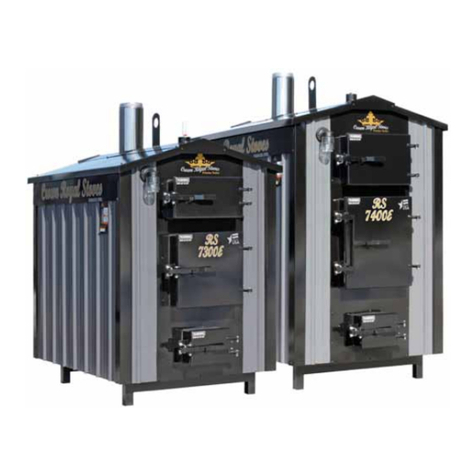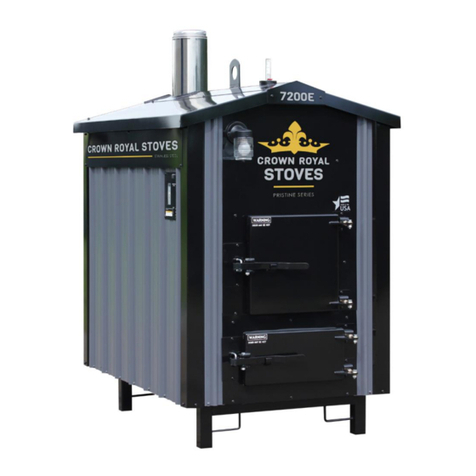
TABLE OF CONTENTS
INTRODUCTIONS/SPECIFICATIONS................................................................................................... 5
BEST BURN PRACTICES ......................................................................................................................... 7
SAFETY INSTRUCTIONS & PRECAUTIONS....................................................................................... 9
INSTALLATION ........................................................................................................................................10
CONCRETE PAD DIMENSIONS............................................................................................................11
CHIMNEY REQUIREMENTS.................................................................................................................12
TRANSFER LINES...................................................................................................................................13
WATER &ELECTRICAL CONNECTIONS...........................................................................................14
PIPING INSIDE BUILDINGS..................................................................................................................14
WIRING INSIDE BUILDINGS................................................................................................................14
ELECTRICAL REQUIREMENTS...........................................................................................................14
EXISTING HOT WATER HEAT .............................................................................................................15
WIRE DIAGRAM FOR GAS BOILER.....................................................................................................16
DOMESTIC HOT WATER &FORCED AIR...........................................................................................17
BRAZED PLATE......................................................................................................................................19
WATER TO AIR.......................................................................................................................................20
STOVE COMPONENTS ..........................................................................................................................21
CONTROL PANEL...................................................................................................................................23
START-UP & OPERATION......................................................................................................................24
FILLING WATER JACKET.....................................................................................................................24
FIRING THE FURNACE..........................................................................................................................24
DAILY FUELING &FIREING ................................................................................................................25
SAFETY....................................................................................................................................................25
POWER FAILURE ...................................................................................................................................25
STARTING ACOAL FIRE.......................................................................................................................26
MAINTENACE ...........................................................................................................................................27
DAILY, WEEKLY, MONTHLY ..............................................................................................................27
ANNUALLY.............................................................................................................................................27
OFF SEASON ...........................................................................................................................................27
ASH, ROTATION & DISPOSAL..............................................................................................................28
CREOSOTE FORMATION & REMOVAL.............................................................................................28
RUNAWAY CHIMNEY FIRE...................................................................................................................28
TROUBLESHOOTING..............................................................................................................................29
ELECTRICAL TROUBLESHOOTING...................................................................................................30
WIRING DIAGRAM..................................................................................................................................31
SMOKE TROUBLESHOOTING..............................................................................................................33
MANDATORY WATER TREATMENT..................................................................................................39
WATER TREATMENT............................................................................................................................39
START-UP DOSAGES.............................................................................................................................40
SYSTEM TESTING..................................................................................................................................41
EMERGENCY PROCEDURES................................................................................................................42
WARRANTY...............................................................................................................................................43
WARRANTY CLAIM FORM ...................................................................................................................45
ELECTRONIC CONTROL INSTALLATION MANUAL.....................................................................47
(ENCLOSED WARRANTY REGISTRATION AND DELIVERY FORM)









































